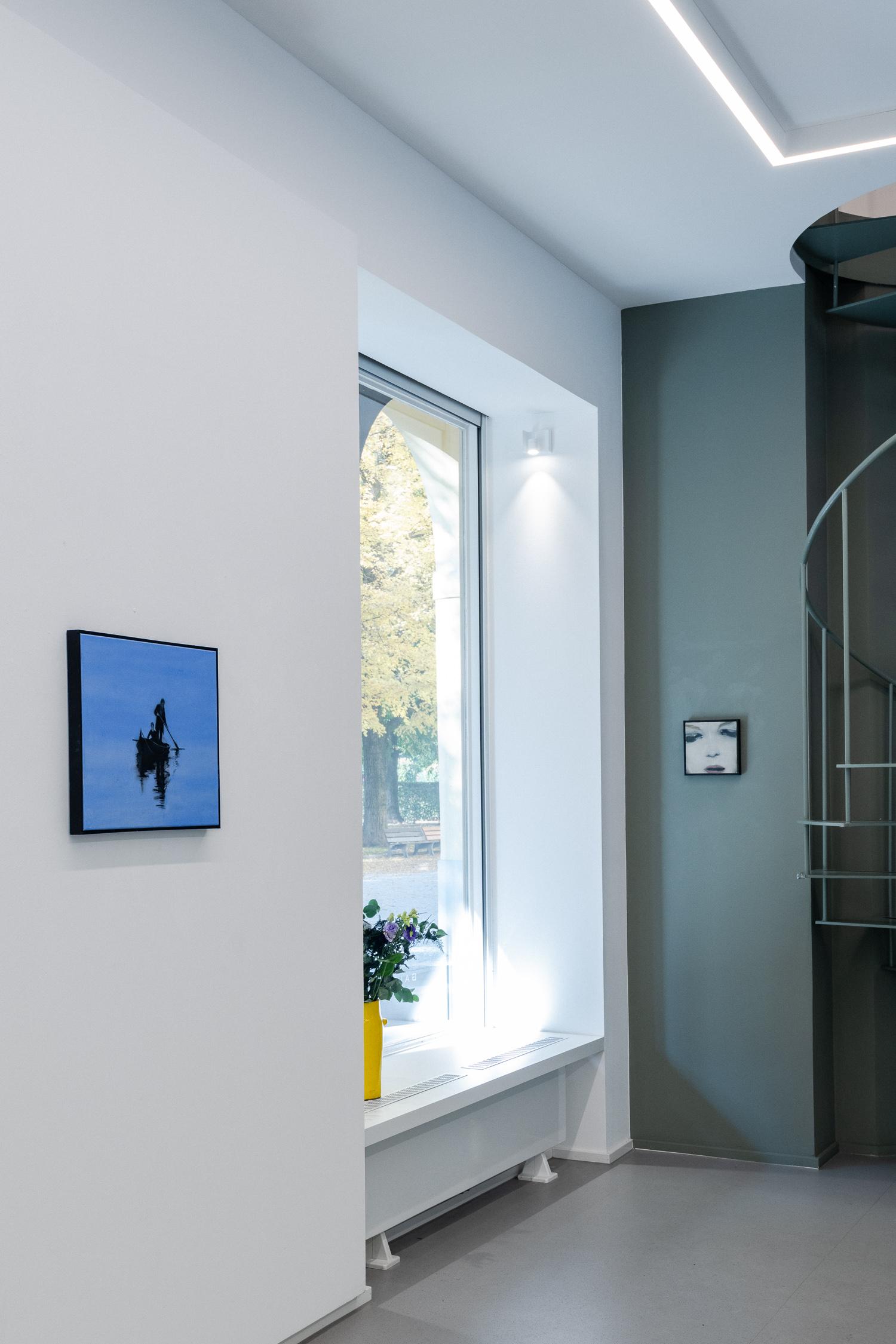
Cinema Paradiso
An exhibition by the Kapurani brothers
An essay by Tinatin Ghughunishvili-Brück
Munich, October 2025
When the Soviet Union collapsed in the early 1990s, taking its entire infrastructure with it, this naturally also affected all those countries that had been forcibly annexed to this pseudo-socialist system – including my home country of Georgia. Electricity was often only available for a few hours a day – this was not an exception, but everyday life. Any form of entertainment that required electricity became a luxury and was celebrated accordingly.
When the power supply was back on, poorly synchronized films starring Jean-Paul Belmondo, Romy Schneider, or Alain Delon played on the small TV in my parents’ kitchen. The quiet, poetic images of Éric Rohmer taught me to daydream. I laughed at Marcello Mastroianni’s expressions and was captivated by Sophia Loren. Without realizing it at the time, I discovered the great treasures of the French Nouvelle Vague, Italian Neorealismo, and a cinema free from Hollywood pathos and propaganda.
Why Soviet officials saw no danger to their “comrades” in these European films, while rigorously banning American cinema from theaters and television screens, can probably only be explained by the ideological divide of the Cold War. But it is precisely this conflict that many of my generation owe their cinematic influences to—their taste, their sensitivity to what film can mean as art.
At the age of twelve or thirteen, I cried for Laetitia in Robert Enrico’s Les Aventuriers and fell in love again and again with Catherine Deneuve’s sad love story in Jacques Demy’s Les Parapluies de Cherbourg. And while darkness and uncertainty reigned outside, the cinema allowed us to forget where we were.
When I met Denis and Marjano Kapurani six years ago and we began to exchange ideas about art, it quickly became clear that we shared a deep appreciation for the medium of film—especially for those cinematic images whose power extends far beyond the moving image and finds a strong counterpart in painting. It is often the quiet, almost motionless scenes that leave a lasting impression: moments of silence that become stills as if by themselves – images that we perceive not as part of a plot, but as independent visual statements. They condense an atmosphere, an attitude, a view of the world that comes very close to painting.
The influence of painting on cinema is unmistakable – for example, in image composition, in the use of light and color, in the staging of space. The influence of film on contemporary painting is equally clear: not only formally, but also in the way it thinks in terms of cuts, sequences, and changes of perspective.
Our conversations quickly developed into a joint reflection on the relationship between painting and film—not on a theoretical level, but based on our shared experience of how powerful a single image can be. The Kapurani brothers do not simply reproduce film scenes; they translate them into a visual language that goes far beyond quotation. Their painting is not interested in plot, but in atmosphere. And this is precisely where their connection to art history begins, which deals with similar questions: What remains when the movement ends? What does a glance say when words are missing?
In their focus on the individual image, the Kapurani brothers open up a multi-layered dialogue with art history. Their works show affinities to symbolism, for example in the psychological charge of seemingly quiet scenes. The painterly austerity and clear, often reduced composition are also reminiscent of interwar painting, as represented by Edward Hopper or Giorgio Morandi, for example—artists who use sparse means to create an intense mood of loneliness, melancholy, and inner tension. At the same time, the works are deeply rooted in the language of contemporary figurative painting: they think in fragments, in empty spaces, and in contradictions.
Nevertheless, the influence of film remains central to this cycle of works—not only as a source for individual motifs, but also as a structural principle. The images behave like stills from a larger, not fully visible narrative. Their composition follows the logic of editing, often also that of the off-screen image – what is not shown remains effective. The cinematic principle of open dramaturgy is also reflected in the painting style: there are no clear turning points, no resolvable tensions, but rather situations in which something is held back.
Thus, the paintings are reminiscent not only of specific cinematic scenes—such as the contemplative attitude of Rublev in Tarkovsky, the intimate uncertainty of a kiss in Lelouch, or the fragile self-presence of a character in Wenders—but rather of cinematic thinking itself: of the trust in the image, in its ability to create mood without having to explain.
Biography:
They both graduated from the Athens Academy of Fine Arts (ASFA) in 2011 (Marjano Kapurani) and 2014 (Denis Kapurani).
They received much attention through solo exhibitions such as “A comet to bury lovers” at the former Archaeological Museum of Thessaloniki, “The Stendhal Syndrome” at the Jugendkirche in Munich, curated by Tinatin Ghughunishvili-Brück and in the show “illuminated skeletons and peacocks” at the Annarumma Gallery in Naples, curated by Stavros Kavalaris. Important milestones on their artistic path included participation in the parallel Documenta 14 in Athens and the exhibition “Villa Salvatore” curated by Marina Athanasiadou at the Zina Athanasiadou Gallery in Thessaloniki. Currently, the Kapurani brothers are part of the group exhibition “Bestiary” at Crux Gallery in Athens.
Their works are in collections in Italy, Germany, Great Britain, USA, Singapore, Greece, Qatar, Norway and France, among others.
Marjano (born 1984) and Denis (born 1990) Kapurani are visual artists. They live and work as an artist duo in Larisa, Greece.
Photos Website: (c) Hannes Rohrer, München